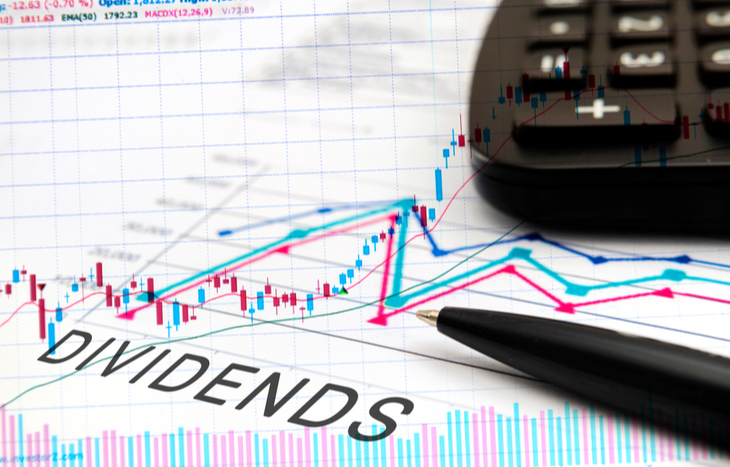What is Dividend Yield?
Dividend investing is a sound strategy for wealth accumulation. For investors who pursue this strategy, one of the most important metrics to evaluate is a company’s dividend yield. Dividend yield is a stock’s annual dividend payout per share, expressed as a percentage of its share price. It’s a direct representation of how much an investor can expect to receive in dividend payments as a shareholder.
Like all investment fundamentals, dividend yield is much more than a number. There’s a lot below the surface of that number that investors need to consider. A high dividend yield isn’t always a good thing, and a low dividend yield might be nothing to scoff at. Here’s what you need to know about dividend yield, how to evaluate it and what it means for the appeal of a potential dividend play in your portfolio.

How to Calculate Dividend Yield
Dividend yield is an easy metric to find when evaluating companies. Most broker profiles will list it if the company pays a dividend. For those who want to perform their own calculation, the formula for dividend yield is relatively simple:
Dividend Yield = Annual Dividends Per Share / Price Per Share
If ABC Company trades at $50 and pays a dividend of $2, its dividend yield is 4% ($2/$50*100). This is an important calculation because it brings context to the dividend a company pays. For example, you might also evaluate XYZ Company. If it trades at $40 and pays a dividend of $1.75, it actually has a higher yield (4.375%) than ABC Company, even though its dividend payout appears lower.
High Isn’t Always Good; Low Isn’t Always Bad
Would you rather invest in a company that pays a 9% dividend yield or one that pays 2%? On the surface, a 9% dividend might be a dream come true for a dividend portfolio. However, below the surface, it’s important to make sure that the dividend is healthy. Moreover, a 2% dividend may seem small by comparison, but could actually be quite generous.
Consider a high dividend yield. A 9% yield might be highly unsustainable for a company, and it might cut the dividend in the near future. Likewise, if the stock price is only $10, a 9% dividend is only $0.09, which means you need to own a significant number of shares to generate passive revenue.
Conversely, low dividends can be good. A 2% yield that’s been steady for a decade isn’t likely to disappear—in fact, it’s more likely to grow. Moreover, if the stock price is $100, a $2 dividend is nothing to scoff at. A lower dividend is also less of a burden on the company as it seeks to grow.
The takeaway is that it’s important to contextualize dividend yield. Is it too high or low in relation to the company’s share price? How long has the company maintained (or cut or grown) that dividend? What’s the dollar value of the dividend? These questions and more are what dividend investors need to fixate on as they evaluate a company.
Dividend Yield vs. Dividend Payout Ratio
There are two main ways to evaluate a company’s corporate dividend: yield vs. payout. Investors should get familiar with both metrics.
- Dividend yield compares the dividend to the share price of the company’s stock.
- Dividend payout ratio compares the dividend to the company’s earnings per share.
The advantage to measuring dividend yield is that it shows the investor’s simple rate of return on dividend payments. Dividend payout ratio instead represents the amount of the company’s net earnings paid out as dividends. The latter is often considered the better metric for understanding dividend health and sustainability.
It’s also important to note the current ratio here. Current ratio can lend insight into the health of a dividend by showing the company’s ability to pay its short-term debt obligations.
Why is it Important?
For dividend investors or retirees with passive income portfolios, dividend yield is an all-important metric. It represents the amount of passive income they can expect to receive per share from their various holdings. If dividend yield drops, it means less income. Dividend investors want to maintain a portfolio filled with high-yield, healthy dividends. To do this takes a keen evaluation of dividends—not just emphasis on the highest yields.
What is a Healthy Dividend Yield?
There’s no set number that signals a healthy dividend yield—it depends on the company. That said, a range from 2% to 6% is often considered healthy and sustainable. Dividends in this range typically don’t hamper a company’s cash flow or hurt its growth prospects. It’s often best to look for companies that start with a small dividend and grow the yield over time, through fiscally responsible evaluation of its ability to continue paying one. Reducing or cutting the dividend altogether is often disadvantageous for the company and investors alike.
Key Takeaways
Dividend yield is an important metric to consider when building a portfolio. Whether you’re a dividend investor or using yield as a metric for evaluating company health, be sure to look past the percentage at the variables behind it. And it’s also important to consider for retirees. To learn more about how dividends can help you retire on your own terms, sign up for the Wealthy Retirement e-letter below.
High yield isn’t always good. Low yield isn’t always bad. Good yield is sustainable and unencumbered to the company issuing the dividend. Look for companies that have a strong, sustainable yield—or one that’s growing. The more sustainable it is, the longer you’ll reap the benefits of the payouts it offers.
[adzerk-get-ad zone="245143" size="4"]




